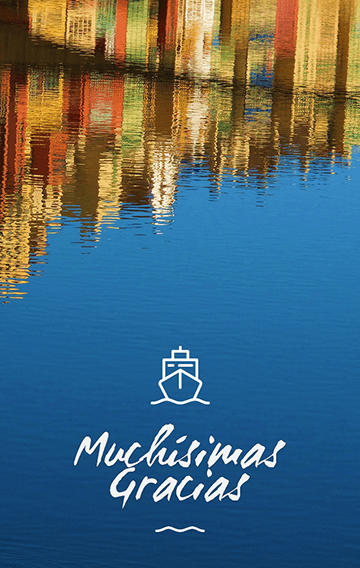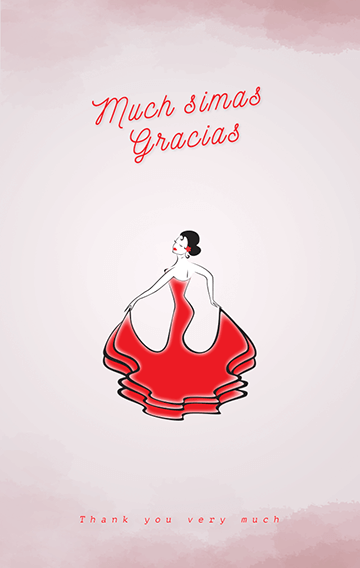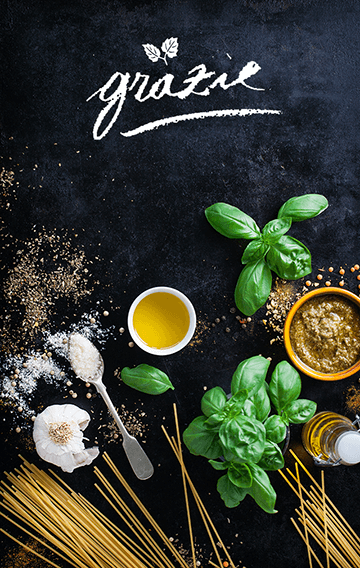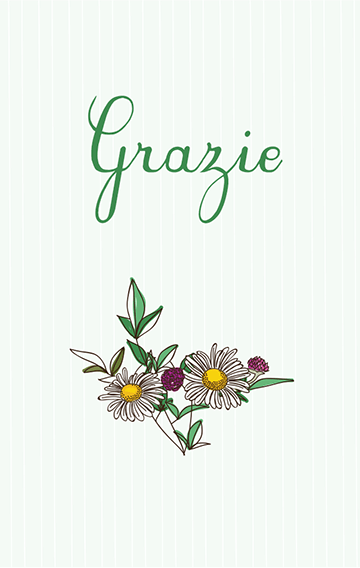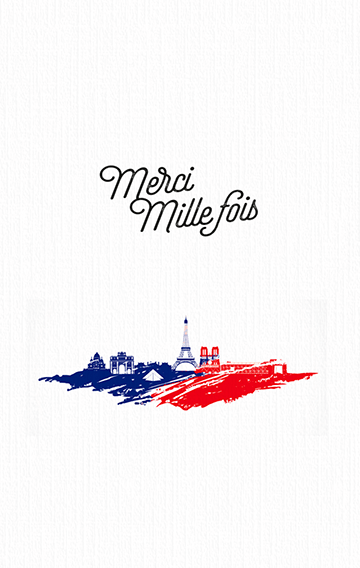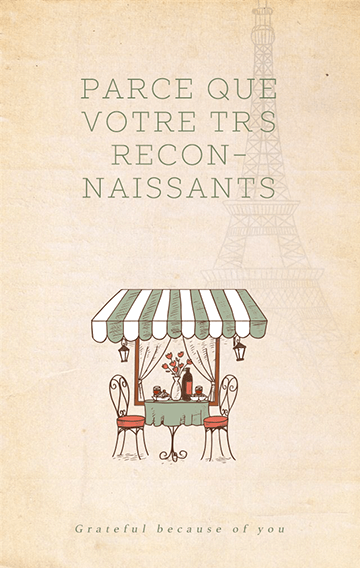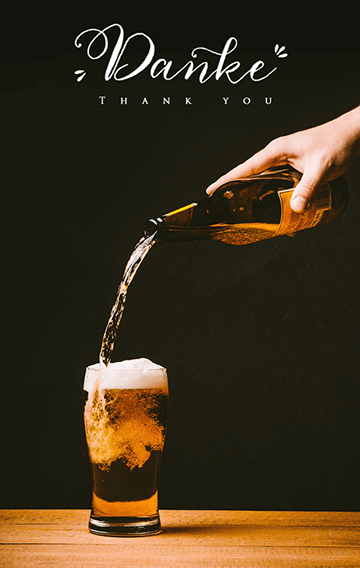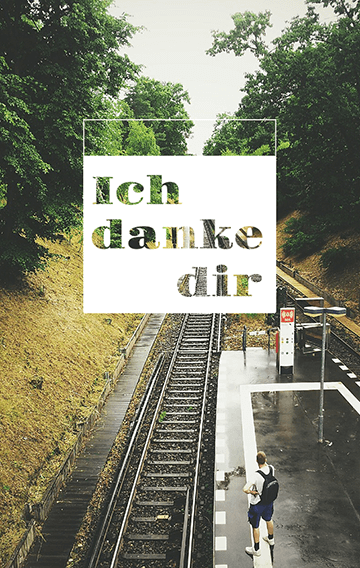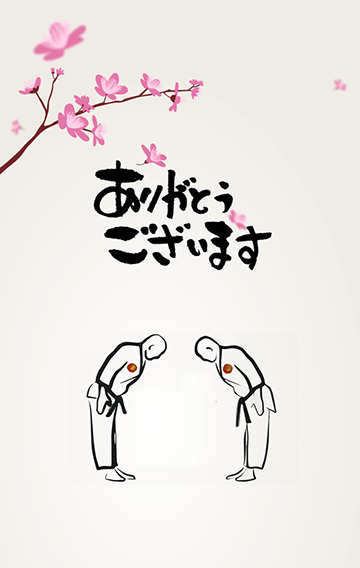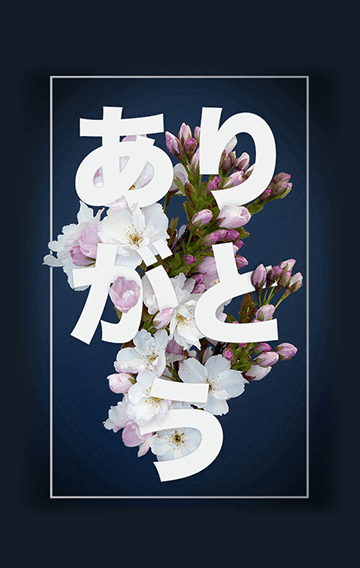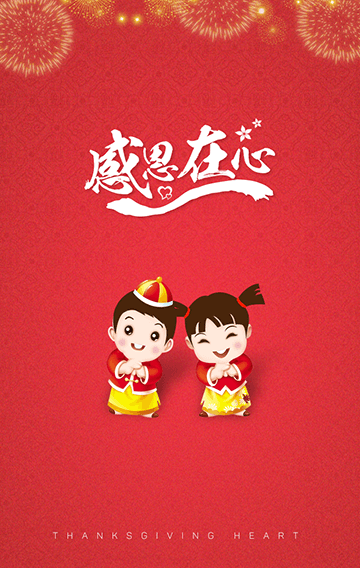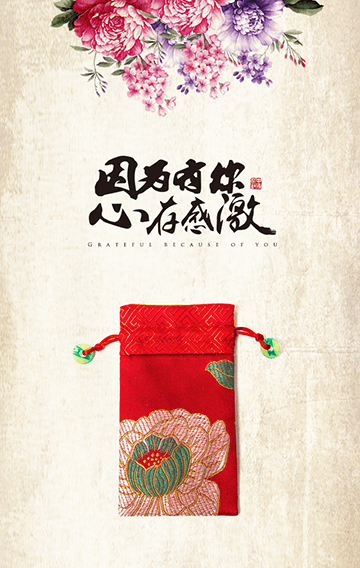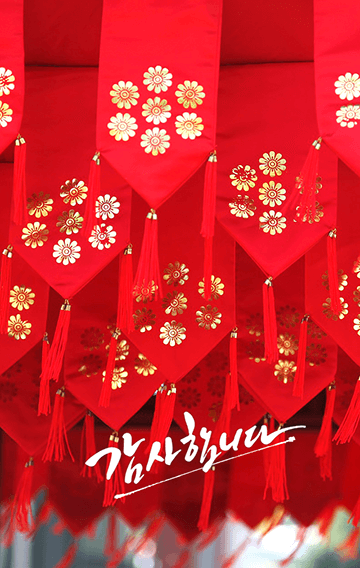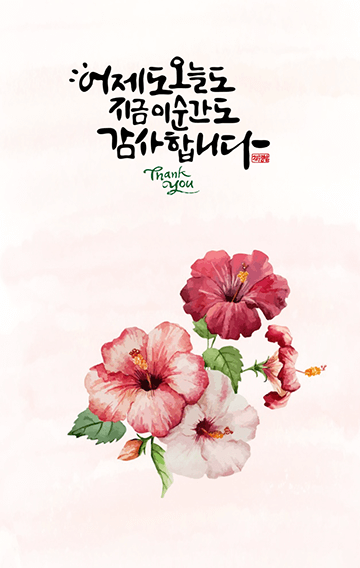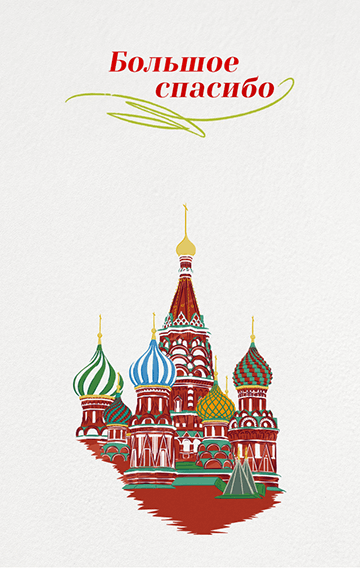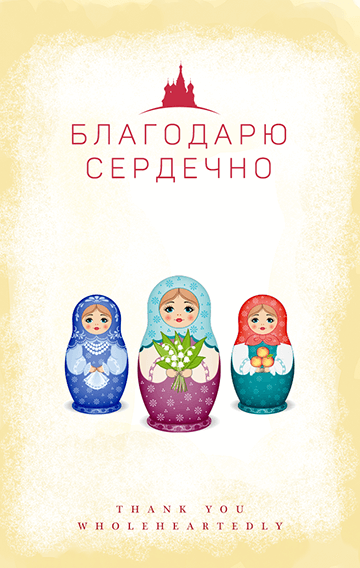How to Say Thank You in Different Languages
Summary: We use thank you every single day. In modern life, it’s necessary to know how to say thank you in different languages under globalization. This article will show you how to say thank you in Spanish, Italian, French, German, Japanese, Chinese, Korean and Russian. And we also offer some tutorial videos on YouTube for your further learning.
How to Say Thank You in __ ?
With the development of globalization, the world has changed greatly. People no longer stay at one place for their whole life, they move. So it's a quite common scene that people come from varied countries working together, maybe just online collaboration in some cases. Meanwhile, studying abroad is bang on trend now, since most universities are open to international students. Let alone those immigrants who choose to settle down in another country due to different reasons. As a result, multilanguage is no longer a strange word, we are all amongst it.
Thank you is the most-used phrase in daily life, we say it all the time. What if under a multi-language environment, how do yo deal with the inevitable thank you moment? Just say thank you? Though English is the most widely used language in the world, it won't hurt to learn some basic common expressions in different languages. We believe this effort will go a long way in showing respect and befriending unexpected awesome foreigners. For example, a simple “merci” will help you to get familiar with your new French neighbor quickly, a “gracias” will easily get you acquainted with a new colleague from Spain, a friendly “arigatou” will empower you a good impression for locals while you’re traveling in Japan...
Language is complicated, especially when it comes to multicultural background. In order to figure out how to say thank you in different languages, you need to first confirm how polite your expression of gratitude needs to be. Some phrases are more casual, while others are more formal. There are also a few expressions used only in certain occasions. Now, we will show you how to say thank you in different languages as follows.
1. How to say thank you in Spanish?
“The passions of Spain's people are the fabric of daily life; this is a country with music in its soul, a love of fine food and wild landscapes, and a special talent for celebrating all the good things in life.” This enchanting description is quoted from Lonely Planet. Yes, “Passion” is the perfect word for Spain and Spanish people. Do you want to know a quick way to involve in the cultural atmosphere? Trying to use all the phrases below, which will definitely win you friends and gain you respect.
| English | Spanish | Remarks |
|---|---|---|
| Thank you | Gracias | The most common word to say thank you, which can be used in any situations. |
| Thank you (formal) | le agradezco | Use this phrase to express your gratitude in a more polite manner. |
| Thank you very much | Muchas gracias | "Muchísimas gracias" expresses a higher degree of gratitude than "Muchas gracias" |
| Muchísimas gracias | ||
| Mil gracias | It literately means "a thousand thanks". |
How to respond to thank you in Spanish?
- Respond with "De nada" to mean "You're welcome" in English.
- Switch to "No es nada", which translates to "it's nothing".
For more help on how to pronounce thank you in Spanish correctly, please view the video below.
Thank You Card in Spanish
2. How to say thank you in Italian?
Italy always reminds people of delicate food, rich cultures, fine art, luscious landscapes...it just like a paradise of pleasure and enjoyment. Sometimes Italian people are consider as lazy due to this, it’s really unfair and stereotyped. I think they simply know better about the art of doing nothing in this crazy busy world.
Anyway do you know the Italian language is derived from Latin? You will be surprise how many Italian words sound like English words, but the spell is different. You know why? Because quite a few English vocabulary comes from Latin too. So it could be fairly easy to pick up for English speakers. Even though the Italian culture is very laid back, it doesn't mean you can ignore some basic courtesy in language. Use the phrases below properly, and you’ll find that hospitable people will treat you better.
| English | Italians | Remarks |
|---|---|---|
| Thank you | Grazie | The most basic way to express thanks. |
| I thank you | Ti ringrazio | Both phrases mean "thank you", but the "ti ringrazio tanto" is casual while the "la ringrazio tanto" is more formal. |
| I thank you (formal) | La ringrazio | |
| Thank you very much | Molte grazie | The simplest way of saying thank you very much, which literately means "many thanks". |
| Grazie mille/ Mille grazie | It is literately translated as "thanks a thousand times" or "a thousand thanks" | |
| Thank you very much (formal) | Grazie tante | The phrase can also be used sarcastically to mean "thanks a lot" in response to a slight or offense. |
How to respond to thank you in Italian?
- Reply with the Italian interjection "prego" is the simplest way to say "you're welcome," "not at all," or "do not mention it".
- Respond with "è stato un piacere", which means "it's my pleasure".
- Answer "non c'è problema". This phrase essentially means "no problem."
- Use "di niente" to express "it was nothing".
View the video to get more information on pronunciation and context clue.
More videos on YouTube:
Thank You Card in Italian
3. How to say thank you in French?
France is the most visited tourist destination in the world. There’re tourists throughout the whole country all year around. So it’s no wonder many French people are polyglots. Despite this, there’s no way for French people to speak English to non- French speaking tourist. Though French people are nice and fun, they’re a little bit fastidious about basic courteous words that everyone should know - in a language of foreign country that you visit. At least, please make sure you can pronounce “merci” in French correctly.
| English | French | Remarks |
|---|---|---|
| Thank you | Merci | Both can be used in both formal and casual settings. |
| Thank you very much | Merci bien/ Merci beaucoup | |
| Thanks a million | Merci mille fois/ Mille fois merci/ Merci infiniment | Express extreme gratitude with these phrases. |
| I thank you (formal) | Je te remercie | "Je vous remercie" is more polite and formal than "Je te remercie", you can use it with strangers or people who are in social positions over you. On the contrary, use "Je te remercie" for someone that you are familiar with. |
| Je vous remercie |
How to respond to thank you in French?
- "de rien" literally means "it's nothing", which can be used in nearly all settings.
- "il n'y a pas de quoi" is another way to say "you're welcome" or "don't mention it."
- The formal reply to "Je vous remercie" is "Je vous en prie".
Click on the video to learn how to pronounce thank you in French correctly.
More videos on YouTube:
- How to Say "Thank You" in French
- Learn French - HOW TO SAY THANK YOU in French
- 6 Ways to say You are welcome in French
Thank You Card in French
4. How to say thank you in German?
For a foreign language you don’t know, what you hear first is its tone and volume. Then many people’s first impression of German could be harsh. Well, German is definitely harsh compared to French or Italian, perhaps due to numerous long complicated words in German which may sound alienating to non-Germans. Don’t worry while you’re reading here, the expression of gratitude in German is very simple.
| English | German | Remarks |
|---|---|---|
| Thank you | Danke | The simplest expression of "thank you" in German. |
| Thank you very much | danke sehr/ danke schön | Both phrases are used to place further emphasis on the thanks, but "danke sehr" is slightly stronger than "danke schön." |
| I thank you | Ich danke dir | You can use these two phrases when you want to thank someone directly. |
| I thank you (formal) | Ich danke Ihnen | |
| Best thanks | Besten Dank | These phrases all express the sentiment of great thanks. |
How to respond to thank you in German?
- Reply with "Bitteschön". It's the easiest way to say "you're welcome", and it can be use with anybody.
- "Gern geschehen" is a standard way to say "you're welcome," "my pleasure," or "not at all."
- A more informal way to say "you're welcome" is to simply use "gerne," which means "gladly."
For pronunciation help, just click on the video below.
More videos on YouTube:
Thank You Card in German
5. How to say thank you in Japanese?
Japanese people tend to be more formal and pay more attention to courtesy than you might think. No matter you are traveling to Japan or simply communicating with Japanese people, you won’t get wrong with courteous manner. Here's a brief explanation of what you need to know about expressions of gratitude in Japanese.
| English | Japanese | Remarks |
|---|---|---|
| Thank you | ありがとう Arigatou |
These are casual forms to express gratitude to friends, colleagues or younger family members. Please notice that "domo" is fasirly more polite than "arigatou". |
| どうも Domo |
||
| Thank you very much | どうもありがとう Domo arigatou |
|
| Thank you (formal) | ありがとうございます Arigatou gozaimasu |
"Arigatou gozaimashita" is the past tense of "arigatou gozaimasu", it's used when you give thanks for something has been done to you. These expressions are all used in formal situations or for people whose position or authority is higher than you, such as teachers, elders, superiors etc.. |
| ありがとうございました Arigatou gozaimashita |
||
| Thank you very much (formal) | どうもありがとうございます Domo arigatou gozaimasu |
How to respond to thank you in Japanese?
- Reply with "dou itashi mashite"どういたしまして, which is equivalent to "you're welcome". It can be used in whatever casual or polite contexts.
- The simplist expression of "never mind" or "it was nothing" shall be "iie"いいえ. It is pronounced as "e-e-yeh".
If you need more details about how to say thank you in Japanese, just watch the tutorial video below.
More videos on YouTube:
Thank You Card in Japanese
6. How to say thank you in Chinese?
Chinese language has the reputation of being a very difficult language to learn, whatever Chinese character or varied tonal system scare off many potential learners. Despite that, it has become more and more popular recent years. Anyway, if you just want to know how to say thank you in Chinese, then it doesn't require that much work. What you need to bear in mind is Mandarin Chinese has 4 tones, which beginners barely notice the nuance sometimes. If you want to pronounce well, please pay more attention to the tone, since you never imagine how different tones create completely new meanings.
| English | Chinese | Remarks |
|---|---|---|
| Thank you | 谢谢 xiè xie | It's the most common way to say "Thanks" in Mandarin Chinese. |
| 谢谢你 xiè xie nǐ | This phrase literally means "I thank you" | |
| Thank you (formal) | 谢谢您 xiè xie nín | Formal speech to show more respect toward people. |
| Thank you very much | 多谢 duō xiè | These expressions can be used in any situations. |
| 非常感谢 fēi cháng gǎn xìe | ||
| Thank you (in Cantonese) | 多谢 doh je | This is the standard way of saying “thank you” in Cantonese, especially in response to thanking for someone for a tangible gift. |
| 唔該 m goi | This expression is applied to the situation that someone offeres a service or favor for you. |
How to respond to thank you in Mandarin Chinese?
- Reply with 不用谢 "bù yòng xìe", it can be use in any contexts.
- Use 不客气 "bù kè qì" to express "you're welcome" or "that's OK".
Following video will offer more information on how to say thank you in Chinese.
More videos on YouTube:
- Chinese in Three Minutes - Thank You & You're Welcome in Chinese
- 6 Awesome Ways to Say Thank You in Mandarin Chinese
- Learn Cantonese - Two ways to say "THANK YOU" in Chinese
Thank You Card in Chinese
7. How to say thank you in Korean?
It is often said that Japanese and Korean are very similar countries, as well as their languages. This is true to some extent, such as they all place a great emphasis on courtesy. You need to use words carefully in terms of formal or informal occasions. But you can’t overlook the fact that both languages have their own distinguished sound and writing systems. Now, let’s see how to say thank you in Korean.
| English | Korean | Remarks |
|---|---|---|
| Thank you | 고마워 Gomawo | The simplest and most casual way of saying thank, you can use it toward friends or people younger than you. |
| 감사해요 Kam sa hae yo | It is used amongst friends and people who are younger than you | |
| 감사 Kamsa | It's an informal and fun way to say thanks toward close friends. | |
| Thank you (formal) | 고맙습니다 Gomapseumnida | Use it with familiar people who have a higher rank or status than you have, like elders, supervisors, or teachers etc. |
| Thank you very much (formal) | 감사합니다 Kamsahamnida | The standard way of expressing gratitude toward someone who has a higher social status. |
How to respond to thank you in Korean?
- Reply with 괜찮아"kwenchana." This is the most general way to say "you're welcome" or "it's OK" in Korean, especially amongst friends or in an informal setting. You can make the phrase more polite by adding "yo" (요) to the end of it. (The phrase is roughly pronounced kwaen-chan-nah.)
- Another alternative for saying "you're welcome" is 아니에요"anieyo".
The video below will bring more information on how to say thank you in Korean.
More videos on YouTube:
- How to say thank you in Korean and you are welcome in Korean
- How to say THANK YOU in Korean
- How to say 'You're welcome' in Korean
Thank You Card in Korean
8. How to say thank you in Russian?
Is vodka the first thing flashing into your brain when we talk about Russia? Just kidding, Russia is actually famous for literature works of a large number of brilliant writers, such as Tolstoy, Pushkin, Dostoevsky, Gogol, Chekhov etc. Therefore, Russian has proven to be a popular language to learn due to this in some degree. General speaking, Russian is one of the most widely spoken native languages in Europe, which came from Slavic group of the Indo-European language family. So it is relatively more difficult for English speaker rather than the Western European languages. No matter what, you can make a good try by saying thank you in Russian.
| English | Russian | Remarks |
|---|---|---|
| Thank you | cпасибо | This is the most common way of saying "thank you" in Russian, and it's applied to most situations. |
| Thank you very much | Большое спасибо | Use this phrase to emphasize your gratitude, which is similar to "big thanks" in English. |
| огромное спасибо | This phrase means "huge thanks", which contains a greater degree of gratitude than "Большое спасибо" | |
| Thank you (formal) | Благодарю вас | This formal expression would be appropriate to use with business colleagues, elders, or strangers. |
| Thank you very much (formal) | Благодарю сердечно | Formal speech to say "thank you wholeheartedly". |
| Благодарю от всей души | Use this phrase to say "thank you from all my heart" in a formal manner. |
How to respond to thank you in Russian?
- The most common way to reply "you're welcome" is "пожалуйста".
- Use "Не за что" for casual replies as "that's all right" or "not at all."
Check the video to get more information about how to say thank you in Russian.
More videos on YouTube:
- Learn Russian - Thank You & You're Welcome in Russian
- How to Say "Thank You" in Russian | Russian Language
Thank You Card in Russian
Have you got a clue now? It’s a good start to your multi-language learning. We believe that bilingual and trilingual are the language trend under globalization. By the way, if you want to make a thank you card in a foreign language, you can try AmoLink to customize your design. We have massive templates, stickers, notes and wallpapers in the theme of thank you, you can easily get your card done with AmoLink. If you don’t bother to create a thank you card, then you can directly use the thank you wallpapers designed by professionals. Just like the illustrations above, which all can be shared via social media or email. Try it now, you’ll get a WOW.
 A Fresh Way to Say Thank You in 2017
How do you deliver “thank you” to others? Sending thank you cards or texting thanks note? Internet makes us away from the traditional polite manner. We hardly send a traditional thank you card to express our feeling of gratitude. On the other hand, many people feel that the store-bought cards are dull and out of novel expressive way in such a booming Internet. A fresh way to say “thank you” with AmoLink interactive thank you cards, a mashup of photos, videos, music, animations, even your voice record, which will enhance your sincerity while you deliver your thank you cards for any occasions, including wedding thank you cards, thank you for birthday wishes, etc., to any people, including lovers, teachers, psychologists, etc., even a foreigner with their own language are available. AmoLink elaborately hand-selected warming thank you quotes for you.
A Fresh Way to Say Thank You in 2017
How do you deliver “thank you” to others? Sending thank you cards or texting thanks note? Internet makes us away from the traditional polite manner. We hardly send a traditional thank you card to express our feeling of gratitude. On the other hand, many people feel that the store-bought cards are dull and out of novel expressive way in such a booming Internet. A fresh way to say “thank you” with AmoLink interactive thank you cards, a mashup of photos, videos, music, animations, even your voice record, which will enhance your sincerity while you deliver your thank you cards for any occasions, including wedding thank you cards, thank you for birthday wishes, etc., to any people, including lovers, teachers, psychologists, etc., even a foreigner with their own language are available. AmoLink elaborately hand-selected warming thank you quotes for you.
 Free Customizable Thanksgiving Cards 2016
At the bare idea of Thanksgiving cards, you may think it’s some parents-type or even grandparents-type stuff. Therefore, AmoLink is here to change your stereotype about it in a novel way. And you will find out that a simple card making can be so much fun.
Free Customizable Thanksgiving Cards 2016
At the bare idea of Thanksgiving cards, you may think it’s some parents-type or even grandparents-type stuff. Therefore, AmoLink is here to change your stereotype about it in a novel way. And you will find out that a simple card making can be so much fun.
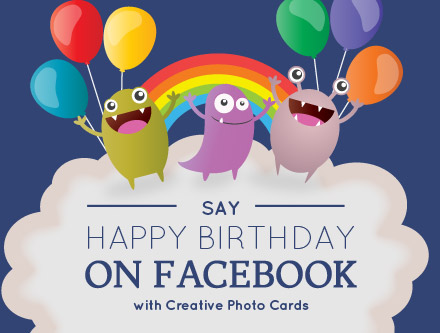 Say Happy Birthday on Facebook with Photo Cards
A photo collage or photo birthday card containing all past happy memories will make your loved ones move and smile. Especially when integrating music, video, sound and animations into the birthday card design, which make it really more vivid and lively.
Say Happy Birthday on Facebook with Photo Cards
A photo collage or photo birthday card containing all past happy memories will make your loved ones move and smile. Especially when integrating music, video, sound and animations into the birthday card design, which make it really more vivid and lively.
